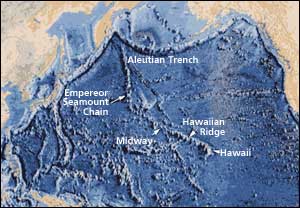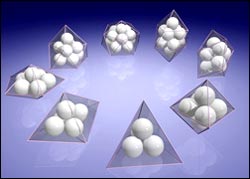
There are likely to have been over 92,500 fewer cancer deaths than expected in the European Union in the year 2000, according to research published today[1] (Tuesday 29 July) in Annals of Oncology – and at least part of the credit will be due to the Europe Against Cancer Programme.
Experts had calculated that EU cancer deaths would rise from just over 850,000 in 1985 to over 1.03 million in 2000 due to demographic reasons, but the new research shows that when final statistics are ava

Researchers from Imperial College London have developed a system using statistical control charts to help monitor mortality rates in general practice.
Although the system, details of which are published online today in The Lancet, was developed as a practical response to monitoring issues raised by the Harold Shipman case, it can also be used to monitor variations in the quality of care between GPs and practices.
Dr Paul Aylin, one of the paper’s authors, from Imperial Co

Geologists have long assumed that the Hawaiian Islands owe their existence to a “hotspot” – stationary plumes of magma that rise from the Earth’s mantle to form Mauna Loa, Kilauea and Hawaii’s other massive volcanoes. But a new study posted on the online version of the journal Science disputes that long-standing paradigm by concluding that the fixed hotspot in the Pacific was not stationary after all.
“Our research suggests that the Hawaiian hotspot actually drifted southwa

Scientists at Harvard Medical School have cleared up some of the mystery surrounding a key structure in the developing brain that helps form the visual circuits. Their findings, which appear in the July 25 issue of Science, could provide new insight into early brain defects that are linked to conditions like cerebral palsy and learning disabilities.
During development, nerve cells in the eye send messages to the thalamus, a region located deep within the brain. The thalamus then passe

Astronomers from the University of Cambridge, UK, have found for the first time the true outer limits of a galaxy. They have also shown that the dark matter in this galaxy is not distributed in the way conventional theory predicts.
The team – Professor Gerry Gilmore, Dr Mark Wilkinson, Dr Jan Kleyna and Dr Wyn Evans – presents its results today at the 25th General Assembly of the International Astronomical Union in Sydney, Australia. The work could provide the key to understanding how

Three years before he received the Nobel Prize in Physics, Eugene Wigner published an article entitled “The Unreasonable Effectiveness of Mathematics in the Natural Sciences” (1960). He marveled at how often physicists develop concepts to describe the “real” world only to discover that mathematicians–heedless of that real world–have already thought up and explored the concepts. His own experience of the uncanny applicability of mathematical insights to the physical reality of quantum mechanics led

In case you’re scratching your head, we help break it down. Using muon spin rotation at the Swiss Muon Source SmS, researchers at PSI have discovered that a quantum phenomenon…

In the 1997 movie “Contact,” adapted from Carl Sagan’s 1985 novel, the lead character scientist Ellie Arroway (played by actor Jodi Foster) takes a space-alien-built wormhole ride to the star…

NASA’s Coronal Diagnostic Experiment (CODEX) is ready to launch to the International Space Station to reveal new details about the solar wind including its origin and its evolution. Launching in…

A research group may have unraveled the mystery behind the locomotion of the ancient marine reptile, the plesiosaur, by recreating a bio-inspired control system that accounts for motion adjustment. Extinct…

Dysferlin protein protects and shapes the membrane of heart muscle cells. Researchers from the Heart Center of the University Medical Center Göttingen (UMG) led by Priv.-Doz. Dr Sören Brandenburg have…

There is fresh momentum in our protein supply — and it’s moving along on six legs. Insects are a source of protein with a smaller resource footprint than conventional alternatives…

Thermoplastic blends, produced by a new process, have better resilience. Now, experiments at the IRIS beamline show, why: nanocrystalline layers increase their performance. Bio-based thermoplastics are produced from renewable organic…

MXene nanomaterials enable wireless charging in textiles. Researchers demonstrate printed textile-based energy grid using MXene ink. The next step for fully integrated textile-based electronics to make their way from the…

Takeout containers get your favorite noodles from the restaurant to your dining table (or couch) without incident, but they are nearly impossible to recycle if they are made from foil-lined…

Researchers are perfecting processes to grow high-quality diamond material reliably and efficiently. Researchers are developing new ideas about the best ways to make lab-grown diamonds while minimizing other forms of…

TU researchers enable better protection for sending sensitive information. In today’s digital landscape, ensuring the privacy of online communications is more critical than ever, especially in professions that rely on…

Researchers discover new magnetic and electronic properties in kagome magnet thin films. A discovery by Rice University physicists and collaborators is unlocking a new understanding of magnetism and electronic interactions…